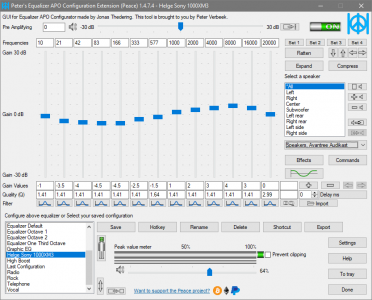Software Installation Very Slow without Internet Access
I have been using Windows 8 Client Hyper-V for a while now and must say it works like a treat – except for one thing: it is practically impossible to give VMs at the same time NATted internet access and connect them to other VMs and to the host. Windows Internet Connection Sharing (ICS) just does not work reliably and I have found no other product to use instead.
For that reason the VMs in my lab are without internet access most of the time. Generally that is no problem, but once in a while they are slow bordering on standstill. These periods of slowness coincide suspiciously with me installing software and they are worse the more complex the installer is. Installing small tools is still bearable (single delays of 20-30 seconds), but larger suites like Citrix XenApp take dozens of minutes. So what’s wrong?
It’s Always the Network
When things take annoyingly long and there is no obvious bottleneck on the local machine the network is always the prime suspect. You might ask what you need internet access for when installing software. As you probably know, most software vendors diligently sign their executables and also their MSI files with a digital certificate. That gives your computer the chance to verify that the software is genuine and has not been tampered with. To do so it checks the signature – which is done quickly. But it also checks if the certificate used for signing might have been deemed “illegal” in the meantime and been put on a list of “outlaw” certificates, the so-called certificate revocation list (CRL). Now guess where the CRL is stored: online, on a web server, of course, or else it could not be updated quickly.
As it turns out the Windows operating system’s cryptographic libraries seem to be pretty inefficient in detecting whether a connection to the server hosting the CRL is possible. Apparently they simply try to download the CRL – and wait until a timeout expires before they accept defeat. Knowing that network timeouts are typically in the 20-30 second range it is easy to imagine how this constitutes a very effective denial of service, or rather denial of installation.
Ignore Evil CRL DoS
Given the sad state of SSL security and the frailty of an online-only revocation list it is no big loss to disable CRL checking altoghether, especially in non-production environments. Do do so open the control panel applet Internet Options, navigate to the Advanced tab and uncheck:
- Check for publisher’s certificate revocation
- Check for signatures on downloaded programs

The latter is not related the CRL checking but it helps speed things up.
.NET 2.0 Applications
A bug in the .NET Framework 2.0 causes the Authenticode signature to be verified every time an application is started. This is a famous cause for long delays when no internet connection is available. To work around it, create an ApplicationName.exe.config file next to the executable with the following contents:
<configuration>
<runtime>
<generatePublisherEvidence enabled="false"/>
</runtime>
</configuration>
If the application is hosted by IIS, like the Citrix Web Interface, the section above must be added to C:\Windows\Microsoft.NET\Framework\v2.0.50727\aspnet.config as described by Matthew Allen.
Other Causes for Delays in an Internet-Less World
CRL checking is by far the biggest nuisance if you are not connected to the internet, but there are others, too. Windows 8’s Defender checks downloaded executables in an online database when they are first run. Although it is much less stupid at detecting if internet access is available, it is a potential source for delays, too.
On my laptop, double-clicking an XLSX file causes – nothing at all, at least for 5-10 seconds. Only then is Excel (2013) started. I am pretty sure this is the doing of Defender, too, but I have not bothered to investigate yet.









6 Comments
Its very unfortunate that Microsoft did not implement a global option to not check for CRL or digital certificates.
In restricted (enterprise) environments administrative accounts are not allowed access to internet and will suffer from these huge delays. Relying on Internet Explorer options is crazy IMHO.
Unfortunately, it seems to be “an Application Choice” whether to check CRL or not: http://social.technet.microsoft.com/wiki/contents/articles/964.certificate-revocation-list-crl-verification-an-application-choice.aspx
Helge, the suggested Internet Explorer settings to disable the CRL check is a user-based change, which might work for the processes your user is running but not for the system processes. As far as I know you will need to disable the CRL check at the .NET Framework level or exe level (you can also use it for mmc.exe by creating an mmc.exe.config file.
Citrix explains this solution in the following article: http://support.citrix.com/article/CTX120115
Or you can check their very thorough article on the many different options for disabling the CRL check (even at machine level) at this blogpost: http://blogs.citrix.com/2012/06/05/slow-web-interfacemmc-console-crl-explained/
Just my added cents :-)
Thanks for the information. What you are referring to affects .NET 2.0 applications only and is described in MS KB936707. I have updated my article with the appropriate information.
Office 2013 relies heavily on Cloud based services, delays ( if there is not Internet access ) or increased Internet usage are to be expected until these thing are disabled.
Hi,
I came across this when looking at this problem with the CRL checking delays but thought I’d offer some advice on the OP’s issue with getting Internet Connectivity on Hyper-V Internal and Private networks.
The way I achieve this on my networks is to have a small VM (2 Legacy Network Adapters, 1GB Disk, 128MB RAM) setup using the zeroshell .iso live cd. Once the VM is booted up you can connect to the web configuration interface.
This allows you to setup DHCP for the internal/private network, NAT for address translation, DNS relay for the internet (if required) etc. I found it quite easy to setup providing you remember to setup an active profile on the disk before setting up the device (if you don’t if forgets your configuration when you reboot). It even supports OpenVPN if required.
There are other Linux firewall distributions you can use too… most of them have a very small footprint.
Hope this helps,
Kevin